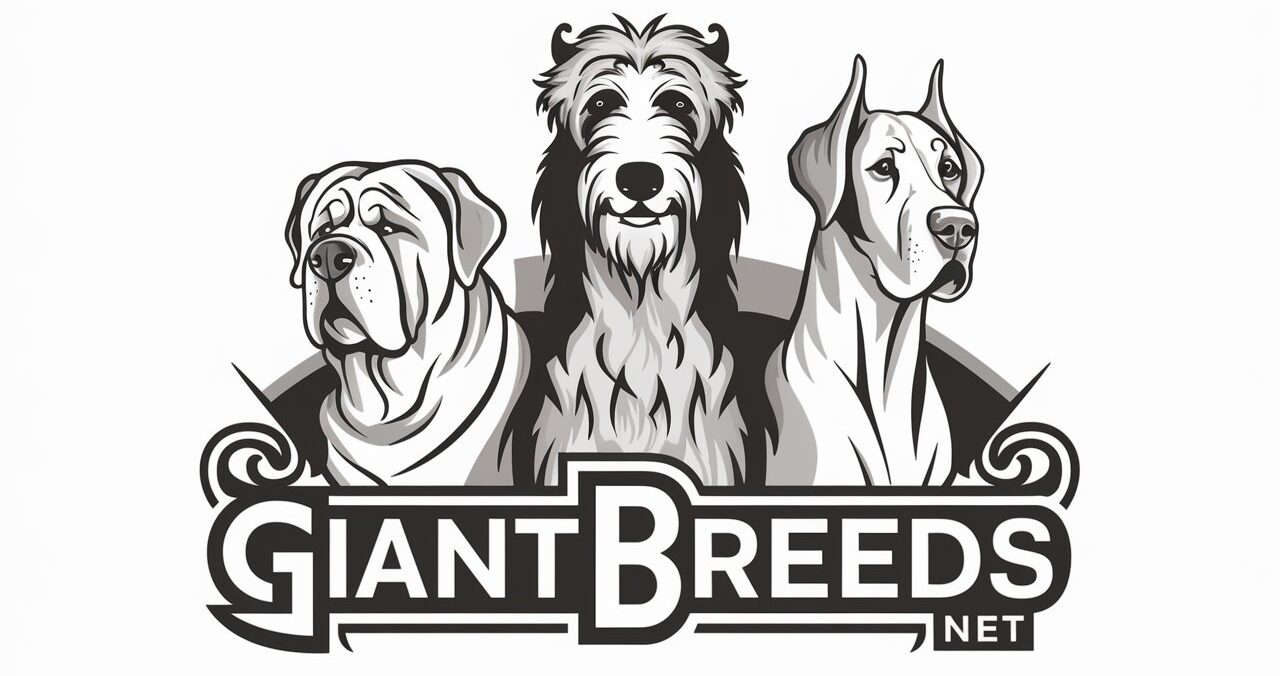Your cart is currently empty!
The Bold and Beautiful Bully Kutta: A Breed Apart
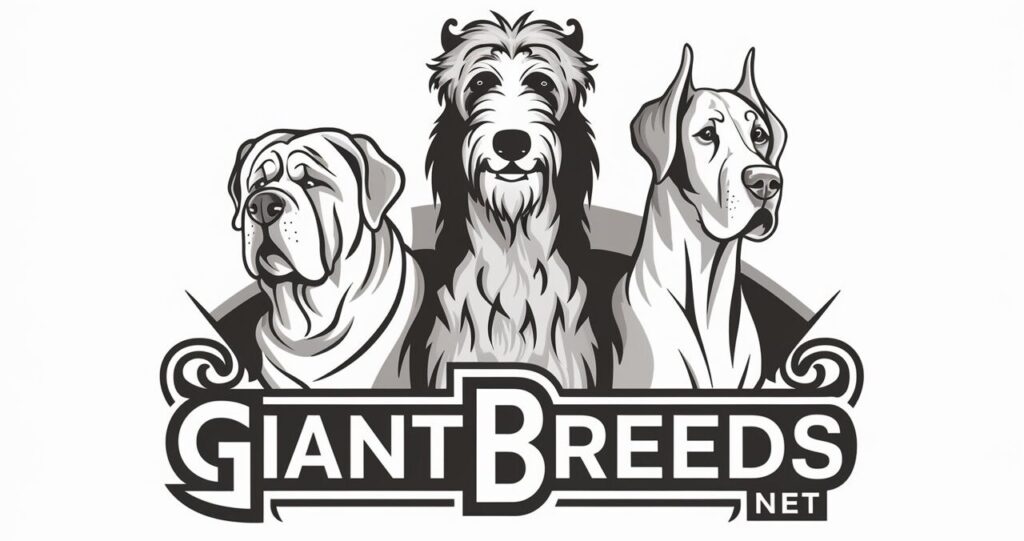
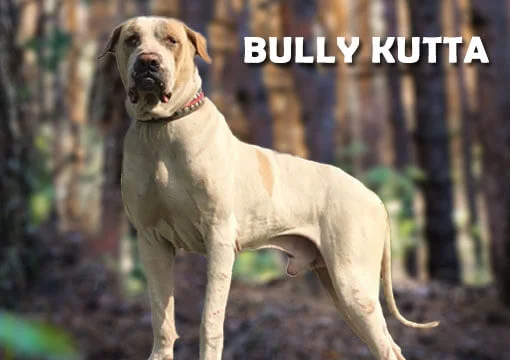
The Characteristics of the Bully Kutta
You will see a lot of the same information repeated over and over again on this page. it is to impress upon you that information and how very important it is that you be aware of it.
The Bully Kutta, often referred to as the “Beast of the East,” is a dog breed with a storied past and a set of characteristics that make it quite distinctive. Originating from the Indian subcontinent, specifically the region that now comprises modern-day Pakistan and India, the Bully Kutta is a breed that commands respect due to its size, strength, and temperament.
Physical Characteristics
The Bully Kutta is a large, muscular breed, standing nearly 3 feet tall and weighing up to 170 pounds. They have a short coat, which is generally easy to maintain, requiring only the basic grooming that all dogs need. However, due to their size and energy levels, grooming may sometimes require professional assistance. Their physical stature is complemented by a broad head and a tail that tapers to a fine point. Their eyes are almond-shaped, and their ears are erect, though they are often cropped.
Temperament
Bully Kuttas are known for their intelligence, alertness, and energy. They are also recognized for their aggressive nature, which makes them formidable guard dogs. This breed is not typically friendly, which can be an asset in guarding scenarios but also means they are not suitable as typical family pets. They are known to be aloof and can be aggressive towards other dogs, pets, and strangers. They require an owner who is experienced in handling dominant canine breeds and can establish respect and control. (see BSL at bottom of the page)
Training and Adaptability
Training a Bully Kutta is not a task for the novice dog owner. They respond only to those they respect and can be extremely challenging to control. Their adaptability to enclosed environments is low; they prefer open spaces and can exhibit destructive behavior if confined. They are also better suited to warmer climates and do not adapt well to cold temperatures.
Activity Needs
The Bully Kutta has high energy levels and requires ample space to play and exercise. Without sufficient physical activity, they can become destructive. This breed is not one that will thrive in a sedentary lifestyle; they need to expend their energy to maintain their mental and physical health.
Health and Lifespan
The lifespan of a Bully Kutta ranges from 8 to 10 years. As with any large breed, potential owners should be aware of common health issues that may arise and ensure they have access to veterinary care that understands the breed’s specific needs.
Conclusion
The Bully Kutta is a breed that embodies strength and determination. They are not the right fit for every home, but with the right owner and environment, they can be loyal and protective companions. Their history as hunting and guarding dogs is a testament to their capabilities, and they continue to be revered in their native lands. If considering a Bully Kutta as a pet, one must be prepared for the challenges and responsibilities that come with owning such a powerful breed.
For those interested in learning more about the Bully Kutta, it’s essential to conduct thorough research and understand the breed’s needs fully. They are a rare and majestic breed with a rich heritage, deserving of respect and proper care.
Why does the “Beast from the East” make a Great Pet
The Bully Kutta is a breed with a storied past and a distinct set of characteristics that may appeal to certain dog enthusiasts. Originating from the regions of Pakistan and India, these dogs have been historically valued for their guarding and hunting abilities due to their size and strength. They are known for their dominant and protective nature, which makes them excellent guard dogs, always watchful and distrustful of strangers, thereby ensuring the safety of their home and family.
However, it’s important to note that the Bully Kutta is not a breed for everyone. Their temperament requires an owner who is experienced in handling large and dominant breeds. The Bully Kutta demands firm training and consistent leadership to ensure they are well-behaved and sociable. With the right training and socialization, they can be noble and obedient companions, showing patience and friendliness towards the children they grow up with, although they may not get along well with other animals.
In terms of maintenance, the Bully Kutta has a short coat that doesn’t shed much, requiring only basic grooming. This includes occasional brushing, bathing, and nail clipping, which might require professional assistance due to their size and energy levels.
The Bully Kutta’s need for space and exercise cannot be overstated. They are not suited for apartment living as they require ample room to play and expend energy. Without adequate physical activity, they may exhibit destructive behavior. They also prefer warmer climates and do not adapt well to cold temperatures.
The Bully Kutta can make a great pet for the right owner. They offer loyalty, protection, and companionship. However, they require a dedicated owner who understands the breed’s needs and is committed to providing the proper training, socialization, and environment. For those willing to take on the challenge, the Bully Kutta can indeed be a rewarding addition to the family.
For more detailed information on the Bully Kutta and whether it’s the right breed for you, consider exploring resources that delve into their history, temperament, and care requirements.
History
The Bully Kutta: A Canine of Majesty and Might
The origins of the Bully Kutta can be traced back to the Indian subcontinent, with some accounts suggesting its presence as early as the 16th century. The breed is believed to have descended from the ancient Alaunt, a large, short-coated hunting or herding dog bred by the nomadic Alani people. These dogs were companions to the Alani as they traversed the regions of what is now Iran, eventually influencing canine bloodlines far and wide.
In the lands of India, the Bully Kutta became a favored pet among ruling families, especially in the Thanjavur and Tiruchi districts of Madras. The Mughal emperor Akbar, known for his love of hunting, owned a Bully Kutta, employing its strength and tenacity in the pursuit of game. The breed’s reputation extended beyond the borders of India, with an Indian Mastiff, likely a Bully Kutta, being showcased at the Second International Dog Show in London in 1864.
The name “Bully Kutta” itself is derived from the Hindustani and Punjabi languages, translating to “heavily wrinkled dog,” a nod to the breed’s distinctive physical traits. These dogs are known for their muscular build, strong jaws, and a tail that curls up elegantly. Their coat colors vary, including black, red, brindle, white, fawn, and harlequin.
Beyond their physical prowess, Bully Kuttas are recognized for their intelligence, alertness, and energy. However, they are also known for their aggressive temperament, which has historically led to their use in dog fighting, an illegal and condemned practice. Today, many non-profit organizations work tirelessly to combat this cruelty and promote the welfare of these noble dogs.
The Bully Kutta’s history is not just a tale of a breed but a narrative that intertwines with the human history of the region. From the courts of emperors to the harsh realities of contemporary issues like illegal dog fighting, the Bully Kutta has endured as a symbol of strength and resilience. As we look to the future, it is our collective responsibility to ensure that the legacy of the Bully Kutta is preserved and honored, not for its might in battle, but for its place in our shared heritage.

Specific Needs and Considerations
Caring for a Bully Kutta is not a task to be taken lightly. These dogs require an owner who is experienced and can provide firm training and guidance. Their dominant nature and large size mean they need to be well-socialized and trained from a young age to ensure they can adapt to their surroundings and behave appropriately.
Physically, the Bully Kutta is impressive: they can weigh between 130 to 170 pounds and stand 28 to 44 inches tall. They possess a short, straight coat, commonly seen in white, though black, brown, brindle, and bi-color variations also exist. This breed’s grooming needs are relatively minimal, but they do shed, and regular brushing will help manage this.
When it comes to their living environment, Bully Kuttas need ample space. They are active dogs and are not suited to apartment living. A house with a large, secure yard is ideal for them to move around and expend their energy. Regular exercise is crucial for their physical and mental well-being, and it helps to prevent any potential behavior issues that could arise from boredom or excess energy.
Health-wise, the Bully Kutta has a lifespan of approximately 8 to 10 years. Prospective owners should be aware of breed-specific health concerns such as hip dysplasia and gastric torsion. Regular health screenings and visits to the vet are essential to ensure they remain in good health.
In terms of temperament, the Bully Kutta is confident, devoted, and strong-willed. They are protective of their family and can be wary of strangers, which makes them excellent guard dogs. However, this also means they require proper socialization to ensure they do not become overly aggressive. They are intelligent dogs and, with the right training, can be loving and loyal companions.
For families considering a Bully Kutta, it’s important to note that while they can be gentle giants with their loved ones, their size and strength necessitate supervision around children and other animals. Proper introduction and continued socialization are key to fostering a harmonious household.
The Bully Kutta is a breed that embodies strength and loyalty, but they are not for everyone. They thrive under the care of an owner who understands their needs and can provide the structure and love they require. If you’re considering adding a Bully Kutta to your family, ensure you have the resources and commitment to meet the specific needs of this majestic breed.
🛠️ Skill Track Compatibility
Why These Tracks Are Listed:
Every giant breed has strengths shaped by instinct, structure, and temperament. The Skill Tracks listed here highlight areas where this breed is most likely to thrive—not just in training, but in purpose. These aren’t requirements or limitations. They’re opportunities. When matched well, Skill Tracks bring out the best in both dog and human—offering focus, fulfillment, and a deeper working bond.
Bully Kutta is good at Protection because they are bold, deeply bonded, and physically imposing. With the right handler, they take protection roles seriously.
Bully Kutta is good at Guarding because they are territorial and intuitive about threats. Their loyalty drives them to protect their space.
Bully Kutta is good at Obstacle & Agility because they’re surprisingly nimble for their size. Physical challenges keep them mentally balanced.
Physical Powers
Standing tall at an average height of 30 to 44 inches and weighing between 150 to 170 pounds, the Bully Kutta’s presence is both impressive and intimidating. The breed boasts a muscular build, with a solid bone structure that underlines its power. The Bully Kutta’s coat is short and smooth, which can come in various colors including white, black, brown, and brindle.
One of the most distinctive features of the Bully Kutta is its agility and speed, which is quite remarkable for its size. This agility, combined with their leaner build compared to other mastiff breeds, makes them incredibly speedy and capable of quick movements. Their wide heads, loose skin, and pendant ears give them a unique appearance, while their teeth generally meet in a scissors bite, showcasing their powerful jaws.
Despite their massive size, Bully Kuttas are known for their energetic nature. They require ample space to play and exercise, which is crucial in managing their high energy levels. Without proper physical activity, they may exhibit destructive behavior, which is why they are not recommended for enclosed living spaces.
The Bully Kutta’s physical prowess was historically utilized for hunting and guarding, and their aggression made them popular as fighting dogs, a practice that is illegal and strongly discouraged today. Their strength and protective instincts, however, make them excellent guard dogs when trained and handled by experienced owners.
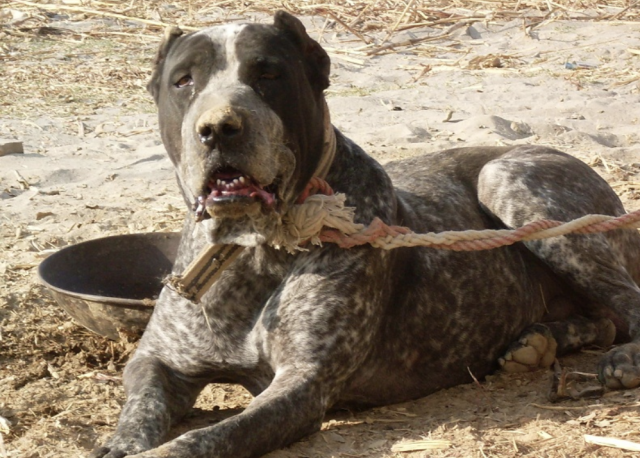
It’s important to note that the Bully Kutta is not a breed for novice dog owners. They require firm, consistent training and socialization from an early age to ensure they become well-adjusted adults. The breed’s powerful nature demands respect and understanding of canine behaviors, and they respond best to handlers they respect.
In conclusion, the Bully Kutta is a breed that embodies physical power and grace. While they may not be suitable for every household, their impressive stature and capabilities make them a subject of fascination for dog enthusiasts around the world. Those who choose to take on the responsibility of owning a Bully Kutta must be prepared for the challenges and rewards that come with such a powerful breed.
Do You See the Pattern Here?
Bully Kutta is not a breed for novice dog owners! They are a large, powerful, intelligent breed with a lot of energy, Strong Willed and an aggressive nature. They are not good house dogs and not suited for apartment living, they MUST HAVE space to move or they become destructive with an aggressive nature. YOU must know what you are getting into if you become an owner of a Bully Kutta. They demand a knowledgeable owner who can provide firm training, proper socialization, and a suitable environment to thrive.
Ailments
When it comes to health, the Bully Kutta is generally considered a robust breed with a life expectancy of 8 to 10 years. However, like any breed, they are susceptible to certain health issues. Here are some of the common ailments found in Bully Kuttas:
- Skin Problems: Bully Kuttas can suffer from various skin conditions, including allergies that cause itching, mange, pyoderma (a bacterial skin infection), vitiligo (loss of pigmentation), and non-cancerous growths like sebaceous cysts.
- Eye Problems: This breed may experience blindness and is at risk for Progressive Retinal Atrophy (PRA), an inherited disease that eventually leads to blindness.
- Heart Diseases: Bully Kuttas can have heart-related issues such as murmurs, valve problems, and an enlarged heart.
Caring for a Bully Kutta requires attention to their physical and mental health. They need daily exercise to maintain their fitness and to prevent destructive behavior that can arise from boredom or excess energy. Their grooming needs are relatively low maintenance due to their short coat, but they do require regular brushing, bathing, and nail clipping. It’s important to note that due to their size and energy levels, grooming might sometimes require professional assistance.
Training and socialization are crucial for Bully Kuttas, given their aggressive tendencies and strong-willed nature. They respond best to experienced handlers who can establish themselves as pack leaders. The breed is not recommended for novice dog owners due to the challenges in training and the need for firm, consistent handling.
In terms of diet, Bully Kuttas require nutrition-rich food appropriate for their stage of development. Some owners even add crushed eggshells to their food for additional nutrients.
The Bully Kutta is a breed that commands respect and requires a dedicated owner who understands the breed’s needs and temperament. With the right care and handling, Bully Kuttas can be loyal and protective companions. However, potential owners should be aware of the breed’s requirements and consider whether they can meet these needs before taking on the responsibility of owning a Bully Kutta.
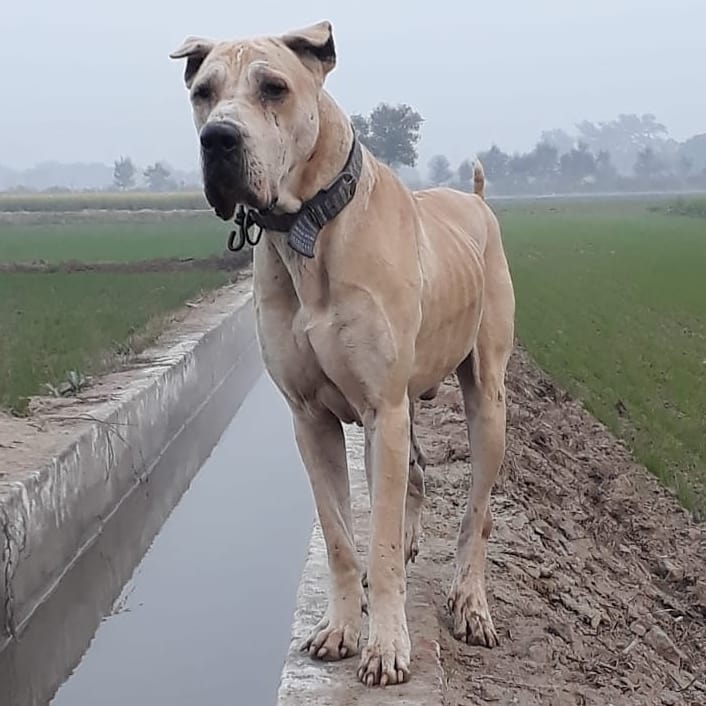
Temperament
When it comes to temperament, the Bully Kutta is described as intelligent, alert, and responsive, but also as energetic and aggressive. They are not typically friendly, which ironically is a trait that has contributed to their popularity in certain circles. Their strong-willed nature means they require an owner who is experienced in handling such dominant canine personalities. Training a Bully Kutta is not a task for the novice dog owner; they respond best to those they respect and can be extremely challenging to control.
In terms of adaptability, the Bully Kutta does not fare well in enclosed spaces, which can lead to destructive behavior. They thrive in warmer climates and need ample space to expend their energy. Grooming is relatively straightforward due to their short coat, but their size and energy levels might necessitate professional grooming assistance.
The Bully Kutta’s protective and devoted nature makes them excellent guard dogs, though they are known to be distrustful of strangers and other animals. This is not a breed that is recommended for first-time dog owners or those unfamiliar with handling assertive breeds. With the right training and socialization, however, they can exhibit docile behavior and even playfulness within their family unit.
For those considering a Bully Kutta as a pet, it’s crucial to understand the responsibility that comes with owning such a powerful breed. They demand a knowledgeable owner who can provide firm training, proper socialization, and a suitable environment to thrive.
Training
Training for Owners of the Bully Kutta
Training a Bully Kutta is not a task for the faint-hearted or inexperienced. It requires a firm hand, consistency, and a deep understanding of canine behaviors.
Socialization is a critical aspect of training for Bully Kutta owners. Introducing the dog to various people, environments, and other animals from a young age is essential for developing a well-adjusted and sociable pet. This breed is known to be dog-aggressive, making early socialization even more crucial to prevent future aggressive encounters.
Obedience training should begin early and include basic commands such as sit, stay, come, and heel. Bully Kuttas are intelligent dogs, but their strong-willed nature can make them challenging to train. Consistent, positive reinforcement methods work best, as they help to establish the owner’s role as the pack leader while also strengthening the bond between dog and owner.
Protection exercises may also be part of the training regimen, given the breed’s history as guard dogs. However, this should be done under the guidance of a professional to ensure that the dog does not become overly aggressive or protective.
Crate training and leash walking are other essential components of a comprehensive training program. Crate training provides a safe space for the dog and aids in housebreaking, while leash training is vital for controlling such a powerful breed during walks.
Owners must be prepared to invest significant time and effort into training their Bully Kutta. The breed’s dominant personality means they are not recommended for inexperienced or passive owners. A Bully Kutta requires plenty of exercise, mental stimulation, and exposure to various stimuli to thrive.
In summary, owning a Bully Kutta is a rewarding experience for those who are up to the challenge. With the right training, socialization, and care, a Bully Kutta can be a loyal, protective, and loving member of the family. For those considering this breed, it’s crucial to research thoroughly and possibly consult with breed experts or experienced owners to ensure you’re fully prepared for the commitment.
Training the Bully Kutta: A Comprehensive Guide
Training a Bully Kutta should begin with socialization at an early age. This process helps the dog learn to interact appropriately with people and other animals. It’s crucial for Bully Kuttas to understand how to behave in various situations, which can prevent aggressive tendencies towards strangers and other pets.
Obedience training is another cornerstone of the Bully Kutta’s education. Basic commands such as ‘sit,’ ‘stay,’ ‘come,’ and ‘heel’ are essential for establishing control and discipline. Positive reinforcement techniques, including treats and praise, are effective in encouraging desired behaviors. This breed responds well to rewards, making it important to recognize and reinforce good behavior promptly.
Protection exercises may also be part of a Bully Kutta’s training regimen. These exercises teach the dog to protect its family and property effectively. However, it’s important to note that such training should only be conducted by experienced professionals, as it requires a delicate balance to ensure the dog does not become overly aggressive.
Behavior modification techniques can be employed to address any aggressive behavior. This involves reshaping the Bully Kutta’s responses to certain stimuli, ensuring they react in a non-threatening manner. Consistency is key in behavior modification, as it helps the dog understand what is expected of them.
Crate training and leash walking are also beneficial for the Bully Kutta. Crate training provides a safe space for the dog and can aid in housebreaking, while leash training is essential for managing such a large breed in public spaces.
It’s important for potential owners to understand that the Bully Kutta is not a breed for novice dog owners. They require an experienced hand that can provide firm yet loving guidance. With the right training and socialization, the Bully Kutta can be a loyal and protective companion.
For those considering adding a Bully Kutta to their family, it’s recommended to seek out professional training assistance. This ensures that both the dog and owner have the support needed to build a strong, respectful relationship. The Bully Kutta is a breed that commands respect and, in turn, offers unwavering loyalty to those they trust. With proper training, they can indeed be a formidable yet loving member of the family.
Understanding the Behavioral Challenges of the Bully Kutta
Training and Socialization:
Bully Kuttas are known for their intelligence and energy, but they can be tough to train. They require a firm, experienced hand and consistent training from an early age to ensure they are well-behaved and obedient. Socialization is also crucial to help them become more adaptable to different situations and prevent aggressive tendencies towards strangers and other animals.

Space and Exercise Needs:
These dogs are not suited for apartment living; they need ample space to move around and exercise. A Bully Kutta confined to a small space may become restless and exhibit destructive behavior. They thrive in environments where they can expend their energy and have a job to do, which aligns with their historical roles as working dogs.
Dominance and Aggression:
Due to their dominant nature, Bully Kuttas can be dangerous if not properly trained and handled. They possess a strong prey drive and can be aggressive by instinct, which means they are not always good with children or other pets. It is essential for owners to establish themselves as the pack leader to manage this breed’s dominant behavior.
Health Considerations:
Prospective owners should also be aware of the health concerns associated with the breed, such as hip dysplasia and skin issues. Regular veterinary check-ups and a healthy lifestyle are important to maintain their well-being.
In conclusion, the Bully Kutta is a majestic breed that requires a dedicated and knowledgeable owner who can provide the necessary training, socialization, and environment. With the right care and attention, these dogs can be loyal and protective companions, embodying the spirit of their heritage. For those considering a Bully Kutta, it is important to understand these challenges and commit to meeting the breed’s needs.

Legal
The Legal Challenges of Owning a Bully Kutta in the U.S.
The Bully Kutta, also known as the Pakistani Mastiff or Indian Mastiff, is a breed that has garnered attention for its impressive stature and protective nature. Originating from South Asia, this breed is known for its dominant and protective traits, often serving as guard dogs and hunting companions. However, owning a Bully Kutta in the United States comes with a unique set of legal challenges that potential owners must navigate.
Firstly, it’s important to note that the Bully Kutta is a rare breed in the U.S., which can make finding a reputable breeder a significant challenge. Those interested in owning a Bully Kutta must ensure they are engaging with breeders who follow ethical practices and provide healthy, well-socialized dogs.
One of the primary legal considerations for owning a Bully Kutta in the U.S. is the presence of breed-specific legislation (BSL). BSL refers to laws that restrict or ban the ownership of certain dog breeds that are considered dangerous. Due to their size, strength, and history as guard and hunting dogs, Bully Kuttas may fall under such legislation in some jurisdictions. This means that potential owners need to be well-informed about the legal status of Bully Kuttas in their area and any associated requirements or restrictions.
Moreover, the temperament of the Bully Kutta requires experienced handling. These dogs are known for their strong-willed nature and need firm training and instruction to ensure their large size and dominant nature are managed appropriately. Inexperienced owners may find it challenging to meet the breed’s needs, which could lead to legal issues if the dog’s behavior becomes problematic.
In addition to BSL, owners of Bully Kuttas may face challenges with insurance. Some insurance companies may not cover certain breeds or may charge higher premiums for breeds considered to be a higher risk. This can add an extra layer of complexity and cost to owning a Bully Kutta.
Lastly, it’s crucial for potential Bully Kutta owners to understand the responsibilities that come with owning such a powerful breed. Proper training, socialization, and care are essential to ensure that the dog is a well-behaved member of the community. Failure to do so can not only lead to legal repercussions but can also contribute to a negative perception of the breed, which can affect breed-specific legislation and ownership rights.
In conclusion, while the Bully Kutta can be a loyal and protective companion, prospective owners in the U.S. must carefully consider the legal implications of owning such a breed. It’s essential to research local laws, engage with experienced breeders, and commit to responsible ownership to navigate the challenges that come with this majestic breed. For those willing to take on the responsibility, the Bully Kutta can be a rewarding addition to the right home.


